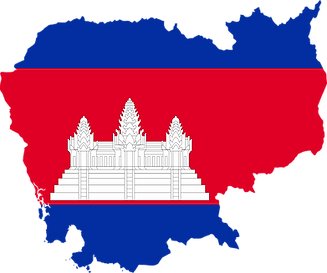
Environmental Impact Assessment (EIA) Process in Cambodia
In Cambodia, the Environmental Impact Assessment (EIA) process is a legal requirement for any project that may significantly impact the environment. Governed by the Ministry of Environment (MoE), the EIA process ensures that projects are planned and executed in an environmentally responsible manner, contributing to sustainable development across the country. The EIA process is designed to identify potential environmental and social risks early, allowing for informed decision-making and the development of mitigation strategies.
Key Steps in the EIA Process
Environmental Impact Assessment in Cambodia (EIA)
-
Screening
Under Prakas 21, the screening phase is the first critical step in determining whether a project requires an EIA and, if so, whether it should undergo an Initial Environmental Impact Assessment (IEIA) or a Full Environmental Impact Assessment (FEIA). This decision is based on the size, nature, and location of the project, as well as its potential environmental impacts. Projects with minimal impacts may be subject to an Environmental Protection Contract (EPC) instead of a full EIA, ensuring that smaller projects are handled appropriately.
2. Scoping
Once a project has been screened, the scoping phase identifies the key environmental and social issues that the EIA study will address. The scope is defined in consultation with stakeholders, ensuring that all potential impacts are considered. Prakas 21 requires project proponents to engage with communities and stakeholders during this phase to determine the significant issues to be evaluated.
3. EIA Study
The EIA study is the heart of the process. It involves a detailed analysis of the project’s potential environmental, social, and economic impacts. This study follows the guidelines set by the Law on Environmental Protection and Natural Resource Management (1996) and other relevant regulations. It includes field data collection, environmental baseline studies, and a thorough assessment of impacts on biodiversity, water resources, air quality, and local communities.
4. Public Participation
Public participation is a critical element of Cambodia’s EIA process and is mandated under Prakas 21. The project proponent must actively engage with affected communities, local authorities, and other stakeholders to gather feedback and address concerns. This ensures transparency and that the project development considers the interests of the local population.
5. Environmental Management Plan (EMP)
The Environmental Management Plan (EMP) details the measures the project proponent will implement to mitigate the identified impacts during construction, operation, and decommissioning. The EMP includes monitoring mechanisms, reporting requirements, and detailed mitigation strategies to ensure that environmental impacts are managed effectively throughout the project lifecycle.
6. EIA Report Submission
After completing the study, the findings are compiled into an EIA report, which outlines the potential environmental impacts, mitigation measures, and environmental management plans. The report is submitted to the Ministry of Environment (MoE) for review and approval, in compliance with Sub-decree No. 72 ANRK.BK on Environmental Impact Assessment Process (1999).
7. Review and Approval by MoE
The Ministry of Environment reviews the submitted EIA report to ensure that it meets all legal and technical requirements. Based on the findings, the MoE determines whether the project can proceed and issues an Environmental Clearance Certificate (ECC) if approved. If the report needs revisions, the project proponent is required to address these concerns before final approval.
8. Monitoring and Compliance
Once the project has been approved, the project proponent must adhere to the monitoring and compliance requirements set forth by the Ministry of Environment and submit their Report every Six Months.
Regular audits are conducted by the MoE to ensure that mitigation measures are effectively implemented, and the project remains in compliance with environmental laws.

Environmental Impact Assessment (EIA)
Relevant Laws and Regulations
The EIA process in Cambodia is governed by the following key laws and regulations:
Law on Environmental Protection and Natural Resource Management (1996):
This law provides the overall framework for environmental protection and sustainable natural resource management in Cambodia.
Sub-decree No. 72 ANRK.BK on Environmental Impact Assessment Process (1999):
This sub-decree outlines the procedural steps and requirements for conducting EIAs in Cambodia.
Prakas No. 21 on EIA Guidelines (2009):
This regulation provides detailed guidelines on how to determine whether a project requires an IEIA, FEIA, or EPC and defines the processes for screening, scoping, and public participation.